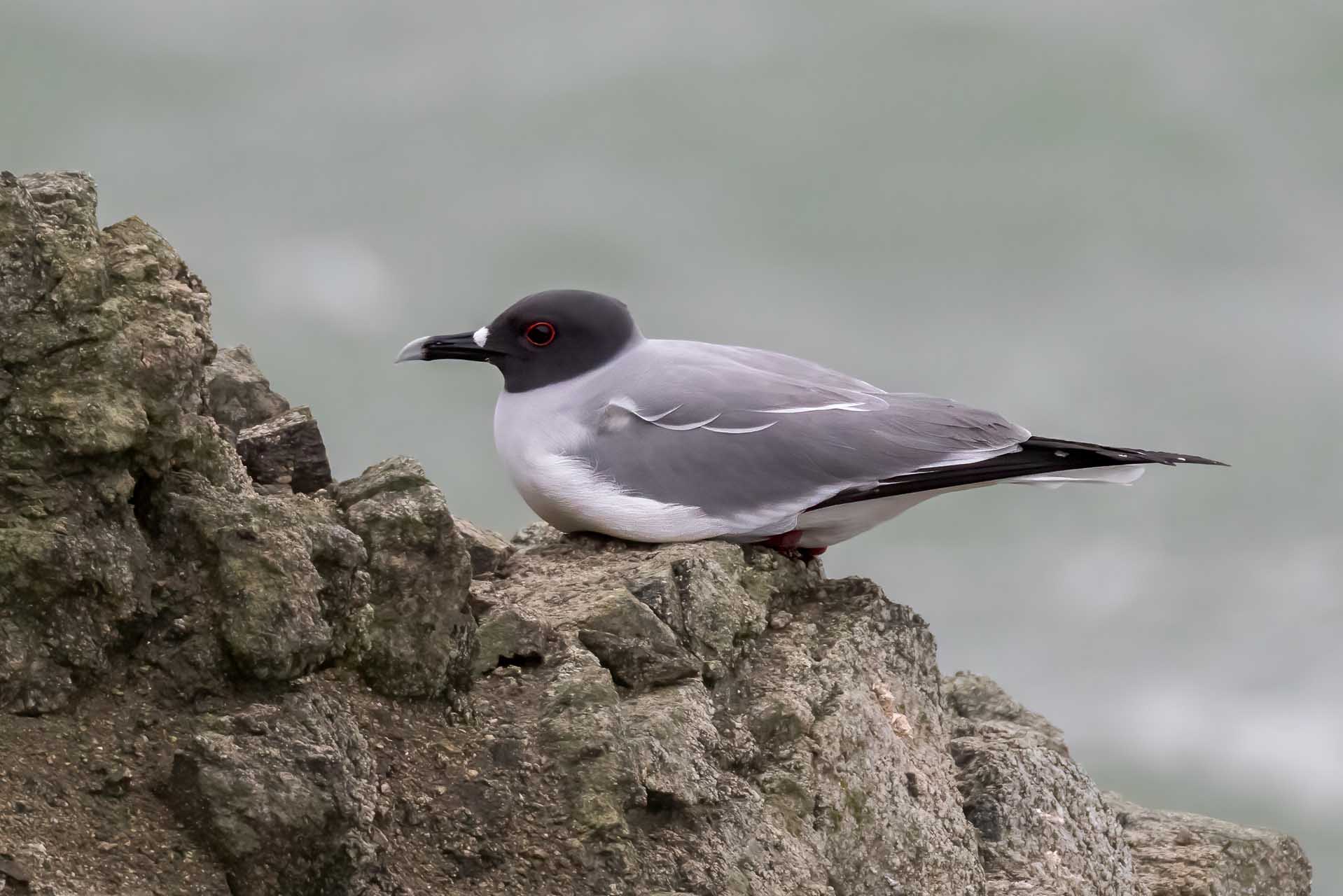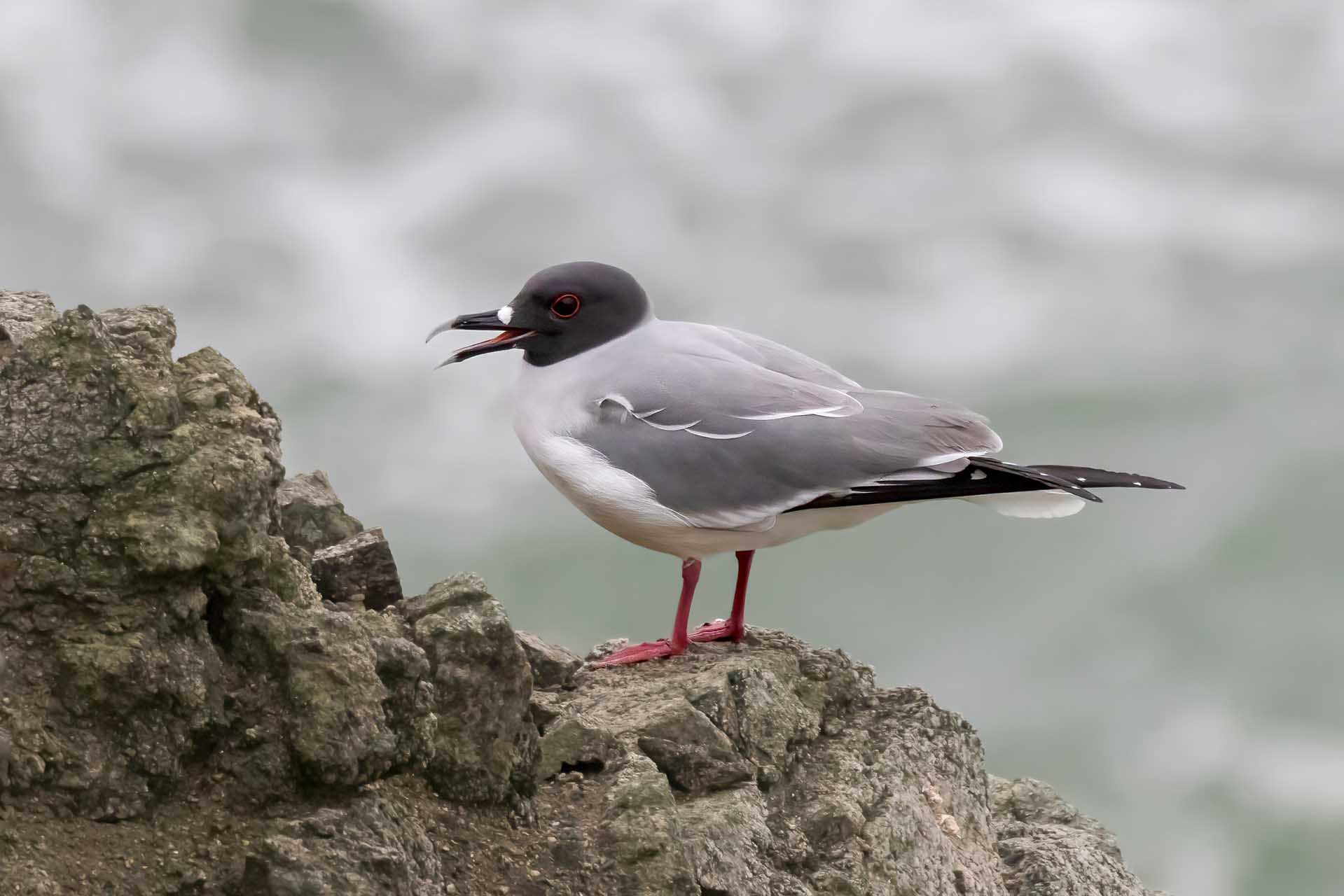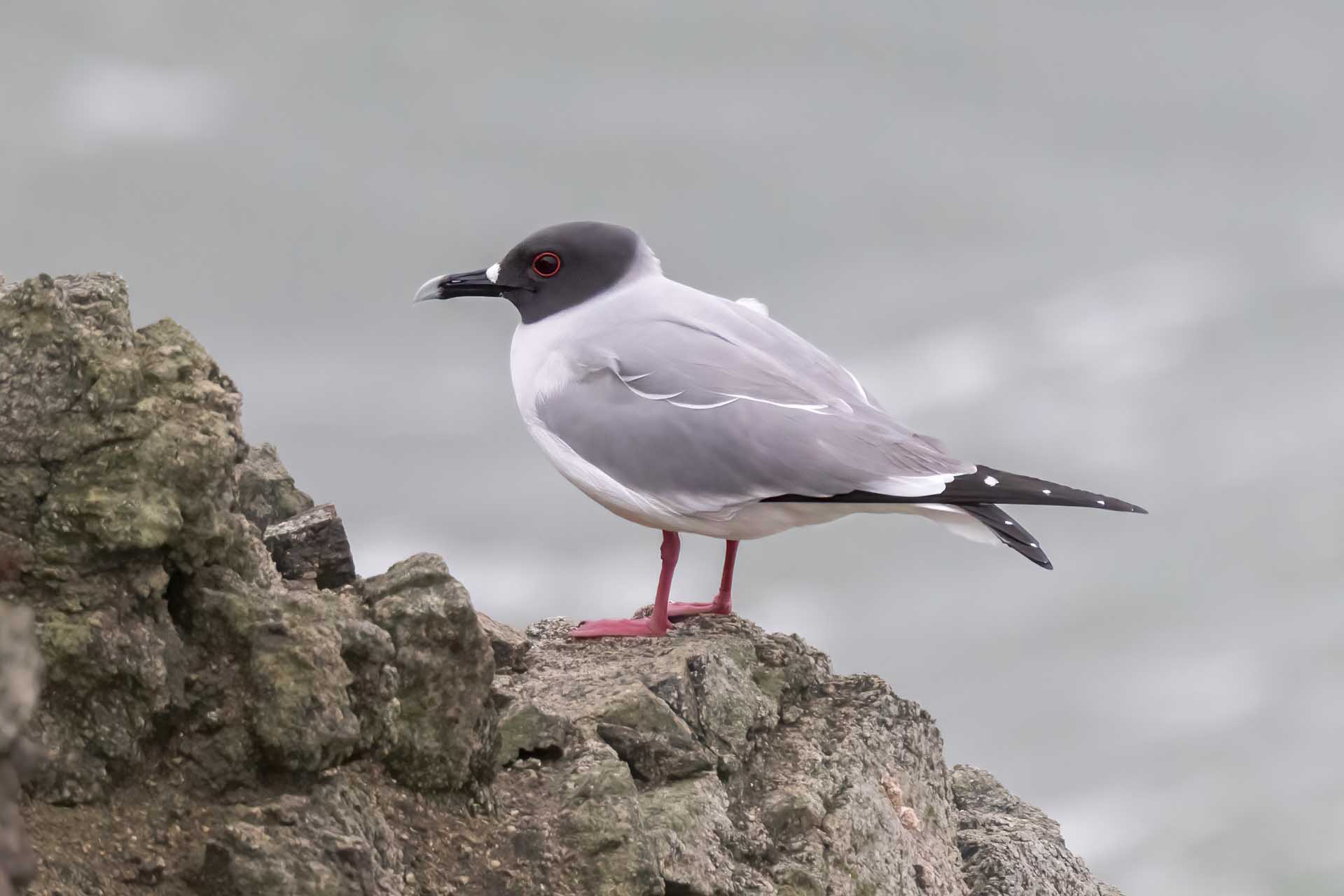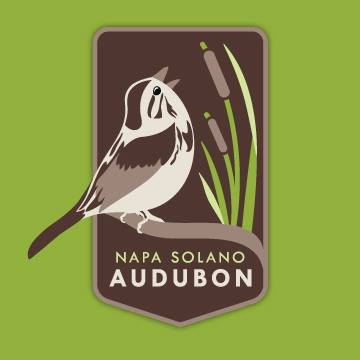Bird of the Week: Swallow-tailed Gull
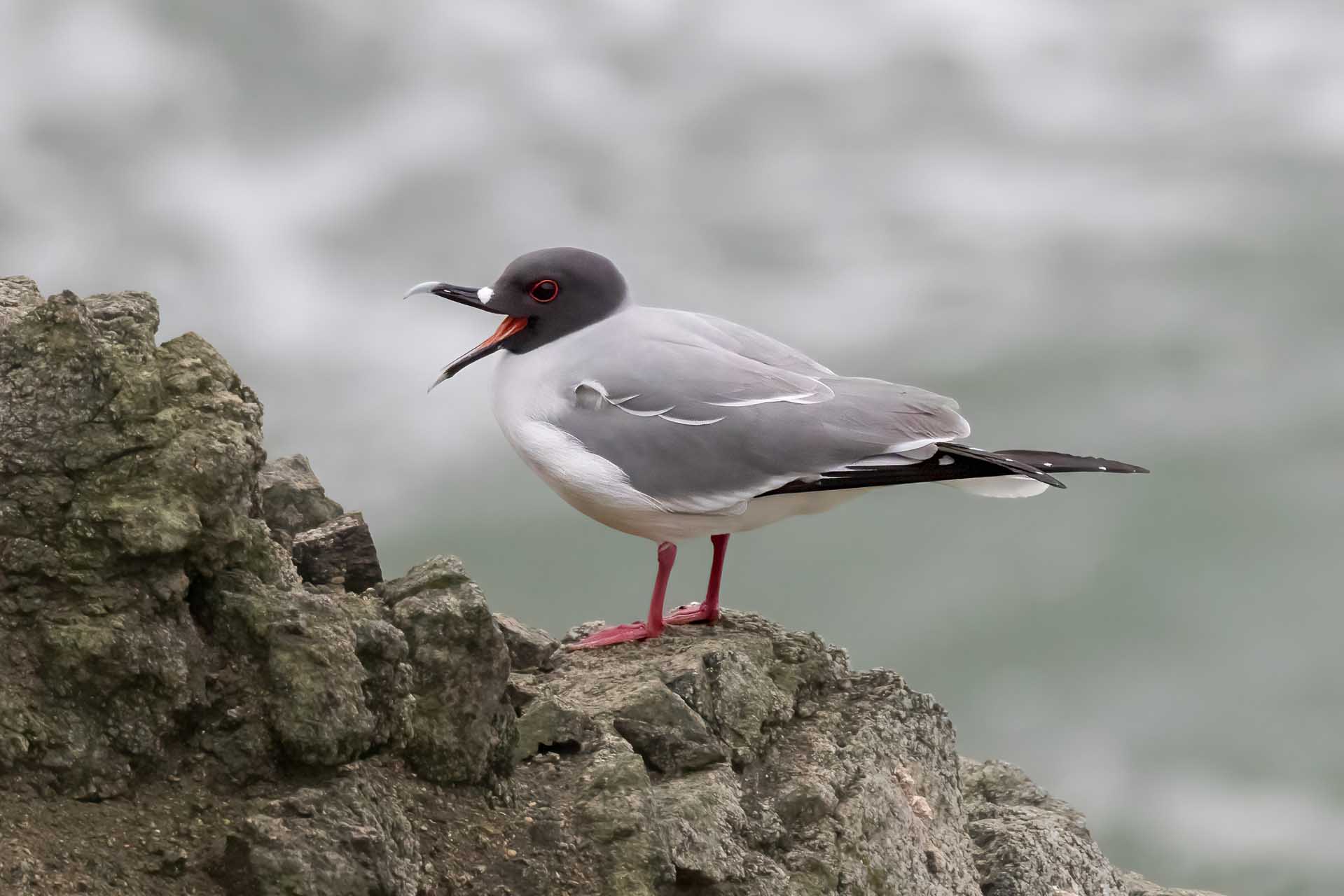
This Swallow-tailed Gull visited Bodega Head a week or so before Christmas, on December 13th and is the 5th U.S. record to visit the mainland. A couple other records occur on off-shore islands including the Farallones. Many birders flocked to Bodega for amazing views of this bird perched precariously on the rocky cliff face. Unfortunately, after 2-3 hours of gusty 30-40 m.p.h. winds, the bird eventually flew from it’s perch high above the pounding surf. It was spotted later just before dusk on the Bodega Bay mudflats and later vanished into the night.
An Adult Swallow-tailed Gull can be easily identified by its dark gray head, white-tipped, black bill which includes a large white patch near the base of the upper mandible, along with a red orbital, eye-ring, light mantle, pink legs, and it’s long, jet black, spotted primaries that form it’s deeply forked “swallow tail” in flight.
During non-breeding season, Swallow-tailed gulls feed at night far out to sea, primarily on squid, so they seldom return to the same location the following day. “They breed on the Galapagos Islands and at least one island off the Colombia coast, and when not breeding travel along the off shore waters of South America’s Pacific. They breed all year long in many different colonies located on steep slopes or broken cliffs. While breeding, both parents remain at the nest during the day, alternating brooding duties. At night the non-brooding parent will take to sea and forage the entire night for squid. This is the most nocturnal gull and its large eyes are specifically adapted for this strategy. In further contrast to almost all other gulls which will return to their natal colony to breed, at the onset of their first breeding cycle Swallow-tailed Gulls will find a new breeding colony.” (For more information, see Birds of the World.
